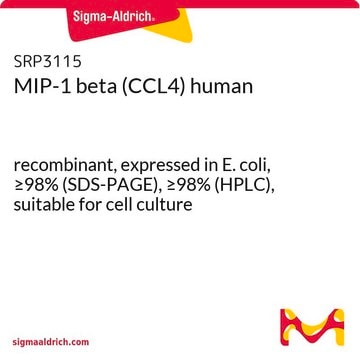Transportation information can be found in Section 14 of the product's (M)SDS.To access the shipping information for this material, use the link on the product detail page for the product.
319961
Carbon tetrachloride
reagent grade, 99.9%
Synonym(s):
Tetrachloromethane
About This Item
91 mmHg ( 20 °C)
Recommended Products
grade
reagent grade
Quality Level
vapor density
5.32 (vs air)
vapor pressure
143 mmHg ( 30 °C)
91 mmHg ( 20 °C)
Assay
99.9%
form
liquid
refractive index
n20/D 1.460 (lit.)
bp
76-77 °C (lit.)
mp
−23 °C (lit.)
density
1.594 g/mL at 25 °C (lit.)
SMILES string
ClC(Cl)(Cl)Cl
InChI
1S/CCl4/c2-1(3,4)5
InChI key
VZGDMQKNWNREIO-UHFFFAOYSA-N
Looking for similar products? Visit Product Comparison Guide
General description
Application
- A precursor to synthesize high-surface-area mesoporous carbon material by a self-templating method in the presence of sodium-potassium alloy (NaK) as a reducing agent.
- A reactant to synthesize 1,2-disubstituted cyclopentanes via Cu-catalyzed ring-closing Kharasch addition reaction with 1,6-dienes.
- A solvent as well as a reactant to prepare diphenyl carbonate from phenol and carbon dioxide in the presence of ZnCl2 as a catalyst.
Signal Word
Danger
Hazard Statements
Precautionary Statements
Hazard Classifications
Acute Tox. 3 Dermal - Acute Tox. 3 Inhalation - Acute Tox. 3 Oral - Aquatic Chronic 3 - Carc. 2 - Ozone 1 - Skin Sens. 1B - STOT RE 1 Inhalation
Target Organs
Liver,Kidney
Storage Class Code
6.1B - Non-combustible acute toxic Cat. 1 and 2 / very toxic hazardous materials
WGK
WGK 3
Flash Point(F)
Not applicable
Flash Point(C)
Not applicable
Choose from one of the most recent versions:
Already Own This Product?
Find documentation for the products that you have recently purchased in the Document Library.
-
What is the Department of Transportation shipping information for this product?
1 answer-
Helpful?
-
-
Who do I contact about larger solvent volume needs?
1 answer-
Email us at [email protected] or visit Sigma-Aldrich Fine Chemicals for development and manufacturing-scale inquiries: [email protected]
Helpful?
-
-
What apparatus do you recommend for HPLC solvent filtration?
1 answer-
The Sigma-Aldrich Vacuum Filtration Assembly gives you all the components you need including: funnel top, fritted glass funnel support, filtration flask, aluminum clamp, and silicone stopper. The Acrodisc Syringe Filters offer high quality filtration for analytical samples, certified for HPLC to ensure low extractable and available in a broad range of membranes to meet sample compatibility requirements.
Helpful?
-
-
Can you recommend a Solvent Extractor for organics from aqueous solution?
1 answer-
Solvent extractors are often used for the quantitative extraction of organics from aqueous solutions and separations in immunoassays. The MIXXOR system has been applied successfully in many laboratory solvent extraction operations and is ideal for the rapid screening of alternative solvents for specific extraction problems.
Helpful?
-
-
What are the options for drying solvents?
1 answer-
Sigma-Aldrich offers a full range of high-purity solvents with extremely low water levels specifically manufactured for moisture sensitive Organic and Biotech applications. Sigma-Aldrich also carries various drying agents such as molecular sieves, which are typically compatible with organic solvents.
Helpful?
-
Active Filters
Our team of scientists has experience in all areas of research including Life Science, Material Science, Chemical Synthesis, Chromatography, Analytical and many others.
Contact Technical Service








